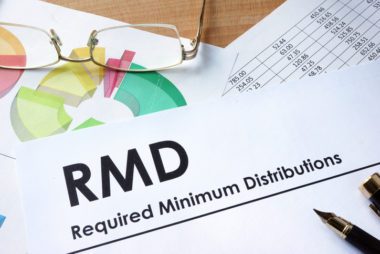 In last week’s column, I discussed strategies to avoid potential capital gains taxes. I’m going to continue with the same theme, but in a slightly different way.
In last week’s column, I discussed strategies to avoid potential capital gains taxes. I’m going to continue with the same theme, but in a slightly different way.
This week l will talk about required minimum distributions (RMDs), particularly how taking them can create unwanted income tax liabilities, while not taking them can create huge tax penalties.
If you’re over age 70 you’re hopefully already aware of what RMDs are, but if you’re not, this might be new information. RMDs are the government’s attempt to ensure that it gets a share of the money that has grown tax free in your individual retirement account (IRA) for decades. By forcing individuals at least 70½ years old to take a portion of their IRA account’s balance out as a taxable distribution each year, the government ensures that taxes are paid on a portion of what has accumulated in the account.
How much you are forced to distribute is based on your age and the value of the IRA account. For example, let’s say you are 70 years old and have an IRA worth $100,000. According to the IRS’s most recent Uniform Lifetime Table you would be required to take out roughly $3,650 in 2019.
That $3,650 is then recorded on a 1099 and must be included as taxable income on your federal tax return. For those who work with an adviser, steps are probably already being taken to ensure your RMD has been fulfilled before the end-of-year deadline. If you don’t work with an adviser, or are unsure if they are tracking your RMD, you need to be aware that failure to meet your RMD is penalized harshly by the IRS. A 50% penalty is assessed for all RMDs not met in the calendar year. Using the example above, that would mean you would be subject to a penalty of roughly $1,825 if you did not process any distributions from that $100k IRA in 2019.
For most retirees who donate to charity, these donations are no longer deductible because of the drastically increased federal standard deduction. However, for RMDs you are legally permitted to distribute these funds directly to a non-profit organization, or charitable foundation. By having these distributions go directly to a non-profit organization, they are not considered taxable income to the individual. Depending on your income levels, this reduction in your taxable income can not only impact how much you pay in taxes, but in some circumstances how much your monthly Medicare premium is as well.
At Stewardship Capital we work closely with the Truman Heartland Community Foundation and recommend them to individuals wishing to develop a charitable giving tax strategy. If you have any questions about RMDs, how they work, if you’ve taken out enough, or how you can keep these distributions from becoming taxable income, feel free to drop us a line. We’re always willing to discuss these topics in more depth over the phone or in person.
